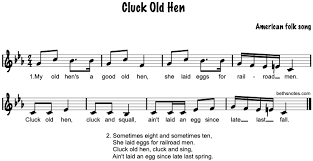
Feeding on Black Soldier Flies Benefits Older Hens
Yan, Y., Zhang, J., Chen, X. and Wang, Z., 2023. Effects of Black Soldier Fly Larvae (Hermetia illucens Larvae) Meal on the Production Performance and Cecal Microbiota of Hens. Veterinary Sciences, 10(5), 364. https://doi.org/10.3390/vetsci10050364
Simple Summary
The production performance of hen generally decreases with age, thereby reducing the forming profits of poultry farmers. Therefore, keeping egg production at a high rate is important. Gut microbial communities play a vital role in the health and function of the host. Animal gut microbiota are a complicated and diverse system easily affected by diet. Diet components could influence the composition and diversity of gut microbiota. In this study, Hermetia illucens larva meal (HILM) was added to diets of hens to determine the effects of HILM on the production performance and cecal microbiota of hens in the late laying period. The results suggest that dietary supplementation with HILM had a significant effect on the production performance and cecal microflora of laying hens during the late laying period. It improved the laying rate, reduced the cracked egg rate, and improved the community richness and community diversity of the cecal microbial. Dietary supplementation with HILM had no adverse effect on the intestinal dominant flora.
Abstract
The effects of Hermetia illucens larvae meal (HILM) as a feed supplement on production performance and cecal microflora were studied in 900 Hy-line Brown laying hens. Laying hens (60 weeks old) were randomly divided into four groups. Each group had five replicates, and each replicate had 45 hens. The control group was fed with a corn–soybean-based diet, and the experimental groups were fed with 1% HILM, 2% HILM, or 3% HILM. Results were as follows: (1) With the increase in HILM level, the laying rate increased linearly (p ≤ 0.05), and the feed/egg and cracked-egg rate decreased linearly (p ≤ 0.05). (2) Community composition analysis showed that the dominant bacteria in each group were Bacteroidetes and Firmicutes, followed by Actinobacteria and Proteobacteria, which accounted for more than 97% of 16S rRNA gene sequence of the total cecal bacteria. (3) Alpha diversity analysis at the operational taxonomic unit classification level showed that the HILM-addition groups had higher community richness and community diversity than the control group. (4) Principal co-ordinates analysis showed that the cecum samples in each group were significantly separated (p ≤ 0.05). At the phylum level, the relative abundance of Bacteroidetes in the HILM addition groups was significantly lower than that in the control group (p < 0.001), and the relative abundance of Firmicutes in the HILM addition groups was significantly higher than that in the control group (p < 0.001). In conclusion, dietary HILM supplementation had a significant effect on the production performance and cecal microflora of laying hens at the late laying period under the conditions of this experiment but had no adverse effect on the intestinal dominant flora.
